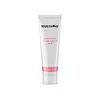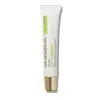What's inside
What's inside
 Key Ingredients
Key Ingredients

 Benefits
Benefits

 Concerns
Concerns

 Ingredients Side-by-side
Ingredients Side-by-side

Ricinus Communis Seed Oil
MaskingRhus Succedanea Fruit Wax
Helianthus Annuus Seed Oil
EmollientEuphorbia Cerifera Wax
Ethylhexyl Palmitate
EmollientTribehenin
EmollientSorbitan Isostearate
EmulsifyingPalmitoyl Tripeptide-1
Skin ConditioningMentha Piperita Oil
MaskingCopernicia Cerifera Wax
Theobroma Cacao Seed Butter
EmollientLimnanthes Alba Seed Oil
Skin ConditioningTocopherol
AntioxidantBorago Officinalis Seed Oil
EmollientHippophae Rhamnoides Fruit Oil
Skin ProtectingRosa Rubiginosa Seed Oil
EmollientAmmonium Glycyrrhizate
MaskingRicinus Communis Seed Oil, Rhus Succedanea Fruit Wax, Helianthus Annuus Seed Oil, Euphorbia Cerifera Wax, Ethylhexyl Palmitate, Tribehenin, Sorbitan Isostearate, Palmitoyl Tripeptide-1, Mentha Piperita Oil, Copernicia Cerifera Wax, Theobroma Cacao Seed Butter, Limnanthes Alba Seed Oil, Tocopherol, Borago Officinalis Seed Oil, Hippophae Rhamnoides Fruit Oil, Rosa Rubiginosa Seed Oil, Ammonium Glycyrrhizate
Ingredients Explained
These ingredients are found in both products.
Ingredients higher up in an ingredient list are typically present in a larger amount.
Ethylhexyl Palmitate, also known as octyl palmitate, is created from 2-ethylhexyl alcohol and palmitic acid. It is a fatty acid ester.
The fatty acid content of Ethylhexyl Palmitate makes it an emollient. Emollients help soften and hydrate your skin by trapping moisture within.
Ethylhexyl Palmitate is also used to help improve the texture of cosmetics. It helps other ingredient dissolve in products and help disperse ingredients more evenly.
You'll likely find this ingredient in sunscreen, as it is often used to mix UV-blocking ingredients such as avobenzone and ethylhexyl triazone.
It can also help stabilize the fragrances in a product as a fragrance fixative.
Ethylhexyl Palmitate can be used to substitute mineral oil.
Due to its high fatty acid content, it may not be fungal-acne safe.
Learn more about Ethylhexyl PalmitatePalmitoyl Tripeptide-1 is also known as pal-GHK. It is made up of 3 amino acids and palmitic acid, a fatty acid that helps it absorb into skin more easily.
This peptide is as a signal peptide, meaning it tells the skin to produce more collagen. Collagen is the key protein that helps form the skin's structure and keep it plump, firm, and hydrated.
By boosting collagen production, this ingredient supports a stronger skin barrier and helps reduce the appearance of wrinkles.
You'll most likely see this ingredient paired with Palmitoyl Tetrapeptide-7 in the well-known Matrixyl 3000 complex. While results from in-house testing should be viewed cautiously, this peptide duo is among the most studied and widely used in modern skincare.
Due to its palmitic acid base, this ingredient may not be safe for Malassezia folliculitis.
Read more about other common types of peptides here:
Learn more about Palmitoyl Tripeptide-1Sorbitan Isostearate is an emulsifer and cleaning agent. It is created from isostearic acid and sorbitol.
As an emulsifier, Sorbitan Isostearate prevents oils and water from separating.
Due to its isostearic acid base, it may not be safe for Malassezia or fungal acne.
Learn more about Sorbitan IsostearateTribehenin comes from glycerin and behenic acid.
It is used as an emollient, or moisturizer. Emollients form a thin barrier on skin to prevent moisture from escaping.
This ingredient may not be Malassezia folliculitis, or fungal-acne safe.
Learn more about Tribehenin